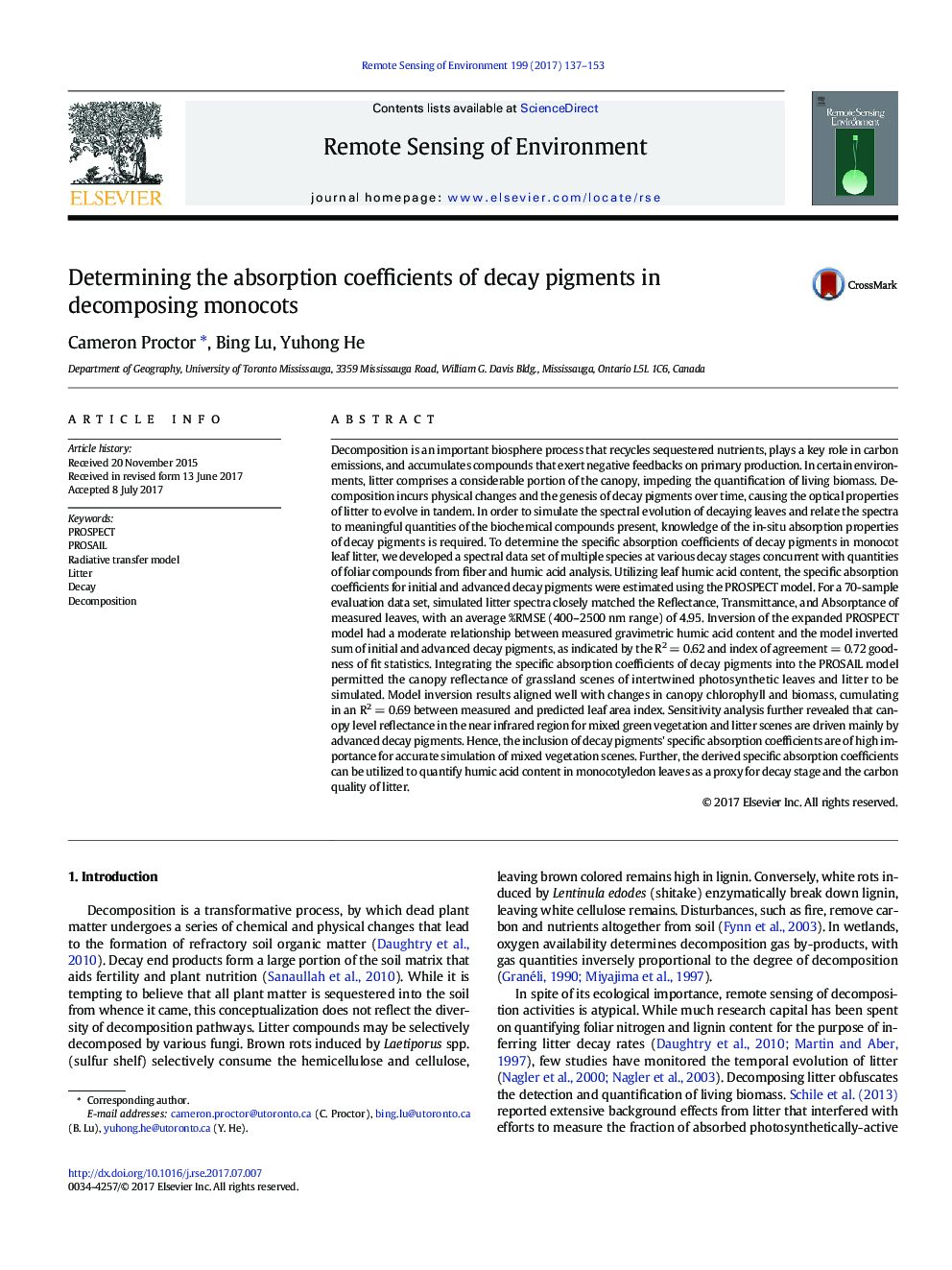| کد مقاله | کد نشریه | سال انتشار | مقاله انگلیسی | نسخه تمام متن |
|---|---|---|---|---|
| 5754838 | 1621201 | 2017 | 17 صفحه PDF | دانلود رایگان |
عنوان انگلیسی مقاله ISI
Determining the absorption coefficients of decay pigments in decomposing monocots
ترجمه فارسی عنوان
تعیین ضریب جذب رنگدانه های تجزیه در یکپارچگی تجزیه
دانلود مقاله + سفارش ترجمه
دانلود مقاله ISI انگلیسی
رایگان برای ایرانیان
کلمات کلیدی
موضوعات مرتبط
مهندسی و علوم پایه
علوم زمین و سیارات
کامپیوتر در علوم زمین
چکیده انگلیسی
Decomposition is an important biosphere process that recycles sequestered nutrients, plays a key role in carbon emissions, and accumulates compounds that exert negative feedbacks on primary production. In certain environments, litter comprises a considerable portion of the canopy, impeding the quantification of living biomass. Decomposition incurs physical changes and the genesis of decay pigments over time, causing the optical properties of litter to evolve in tandem. In order to simulate the spectral evolution of decaying leaves and relate the spectra to meaningful quantities of the biochemical compounds present, knowledge of the in-situ absorption properties of decay pigments is required. To determine the specific absorption coefficients of decay pigments in monocot leaf litter, we developed a spectral data set of multiple species at various decay stages concurrent with quantities of foliar compounds from fiber and humic acid analysis. Utilizing leaf humic acid content, the specific absorption coefficients for initial and advanced decay pigments were estimated using the PROSPECT model. For a 70-sample evaluation data set, simulated litter spectra closely matched the Reflectance, Transmittance, and Absorptance of measured leaves, with an average %RMSE (400-2500 nm range) of 4.95. Inversion of the expanded PROSPECT model had a moderate relationship between measured gravimetric humic acid content and the model inverted sum of initial and advanced decay pigments, as indicated by the R2 = 0.62 and index of agreement = 0.72 goodness of fit statistics. Integrating the specific absorption coefficients of decay pigments into the PROSAIL model permitted the canopy reflectance of grassland scenes of intertwined photosynthetic leaves and litter to be simulated. Model inversion results aligned well with changes in canopy chlorophyll and biomass, cumulating in an R2 = 0.69 between measured and predicted leaf area index. Sensitivity analysis further revealed that canopy level reflectance in the near infrared region for mixed green vegetation and litter scenes are driven mainly by advanced decay pigments. Hence, the inclusion of decay pigments' specific absorption coefficients are of high importance for accurate simulation of mixed vegetation scenes. Further, the derived specific absorption coefficients can be utilized to quantify humic acid content in monocotyledon leaves as a proxy for decay stage and the carbon quality of litter.
ناشر
Database: Elsevier - ScienceDirect (ساینس دایرکت)
Journal: Remote Sensing of Environment - Volume 199, 15 September 2017, Pages 137-153
Journal: Remote Sensing of Environment - Volume 199, 15 September 2017, Pages 137-153
نویسندگان
Cameron Proctor, Bing Lu, Yuhong He,
